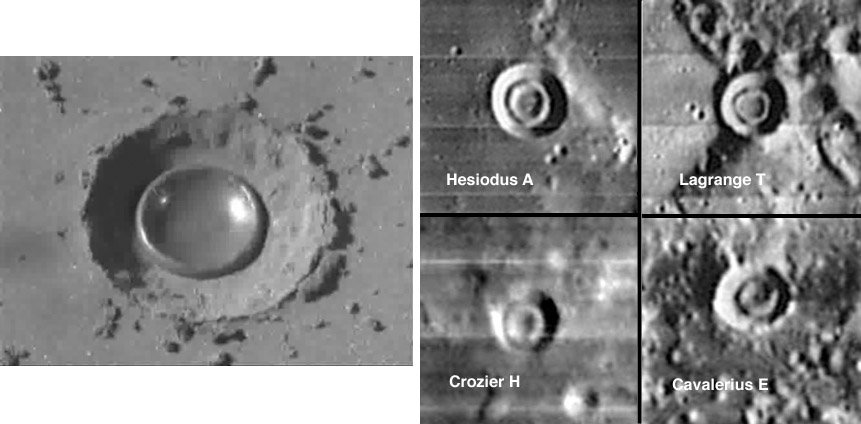December 3, 2019
Lunar Raindrops?
Originally published June 20, 2010

left image screen capture from Hiroaki Katsuragi and right from a 2004 LPOD
Concentric craters are among the most peculiar on the Moon. Typicaly 5 to 15 km in diameters they appear to be normal impact craters that have a smaller ring inside them. They are unlikely to be random individual impacts, one inside the other, and unsatisfying guesses of their origin revolve around volcanism or some sort of double rebound from a single impact. New small scale experiments of falling water drops hitting granular material have now produced features (left) very similar to lunar concentric craters - is this the answer? I don't think so. Despite the crater within crater similarity the conditions of formation of the experimental craters are vastly different than the lunar ones. Free-falling versus hyper-velocity impact speeds, liquid drop projectiles versus solid ones (ice or rock), and loose grains versus consolidated rock targets. The entire impact process is transformed by hyper-velocity impact with the projectile being destroyed rather than bouncing. Also it is inconceivable that liquid projectiles could exist in space, and finally, fragmental lunar regolith covering lava flows is much stronger than loose grains. Nonetheless, even if fortuitous, the similarity of morphology is stimulating, perhaps encouraging new thoughts on how lunar concentric craters formed.
Chuck Wood
Note: Stefan Lammel has just found a free link to the Katsuragi paper.
Yesterday's LPOD: Unrelated Mountains
Tomorrow's LPOD: London Moon
COMMENTS?
Register, Log in, and join in the comments.



